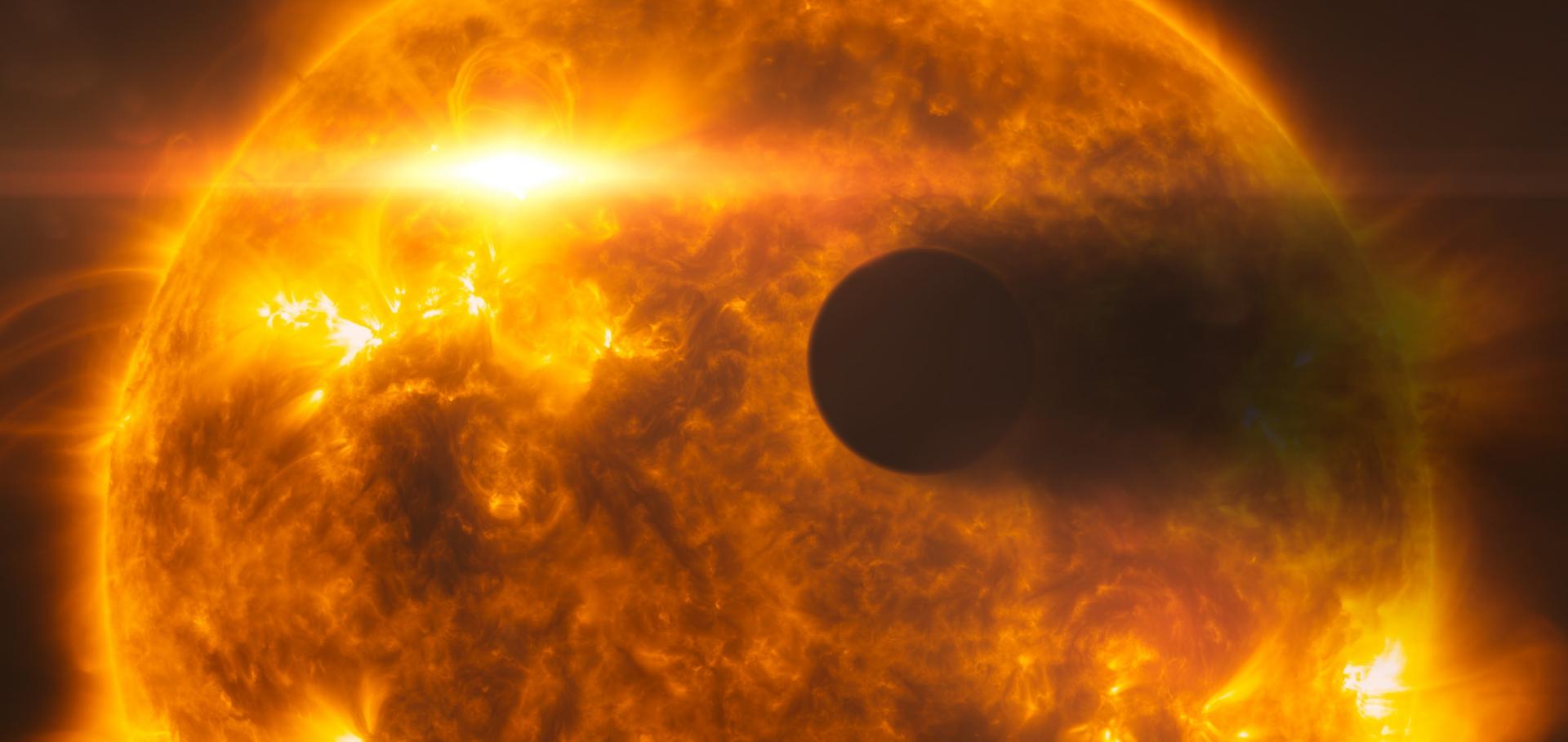Transiting exoplanets from the CoRoT space mission IX. CoRoT-6b: a transiting `hot Jupiter' planet in an 8.9d orbit around a low-metallicity star
(2010)
Erratum: The secondary eclipse of the transiting exoplanet CoRoT-2b * (Astronomy and Astrophysics (2009) 501 (L23-L26) DOI:10.1051/0004-6361/ 200912505)
Astronomy and Astrophysics 512:8 (2010)
Transiting exoplanets from the CoRoT space mission: X. CoRoT-10b: A giant planet in a 13.24 day eccentric orbit
Astronomy and Astrophysics 520:10 (2010)
Abstract:
Context. The space telescope CoRoT searches for transiting extrasolar planets by continuously monitoring the optical flux of thousands of stars in several fields of view. Aims. We report the discovery of CoRoT-10b, a giant planet on a highly eccentric orbit (e = 0.53 ± 0.04) revolving in 13.24 days around a faint (V = 15.22) metal-rich K1V star. Methods. We used CoRoT photometry, radial velocity observations taken with the HARPS spectrograph, and UVES spectra of the parent star to derive the orbital, stellar, and planetary parameters. Results. We derive a radius of the planet of 0.97 ± 0.07 RJup and a mass of 2.75 ± 0.16 MJup. The bulk density, ρp = 3.70 ± 0.83 g cm-3, is ∼2.8 that of Jupiter. The core of CoRoT-10b could contain up to 240 M⊕ of heavy elements. Moving along its eccentric orbit, the planet experiences a 10.6-fold variation in insolation. Owing to the long circularisation time, τcirc > 7 Gyr, a resonant perturber is not required to excite and maintain the high eccentricity of CoRoT-10b. © 2010 ESO.Transiting exoplanets from the CoRoT space mission: XI. CoRoT-8b: A hot and dense sub-Saturn around a K1 dwarf
Astronomy and Astrophysics 520:10 (2010)
Abstract:
Aims. We report the discovery of CoRoT-8b, a dense small Saturn-class exoplanet that orbits a K1 dwarf in 6.2 days, and we derive its orbital parameters, mass, and radius. Methods. We analyzed two complementary data sets: the photometric transit curve of CoRoT-8b as measured by CoRoT and the radial velocity curve of CoRoT-8 as measured by the HARPS spectrometer. Results. We find that CoRoT-8b is on a circular orbit with a semi-major axis of 0.063 ± 0.001 AU. It has a radius of 0.57 ± 0.02 RJ, a mass of 0.22 ± 0.03 MJ, and therefore a mean density of 1.6 ± 0.1 g cm-3. Conclusions. With 67% of the size of Saturn and 72% of its mass, CoRoT-8b has a density comparable to that of Neptune (1.76 g cm-3). We estimate its content in heavy elements to be 47-63 M, and the mass of its hydrogen-helium envelope to be 7-23 M. At 0.063 AU, the thermal loss of hydrogen of CoRoT-8b should be no more than ∼0.1% over an assumed integrated lifetime of 3 Ga. © 2010 ESO.Stellar rotation at young ages: new results from Corot's monitoring NGC 2264
HIGHLIGHTS OF ASTRONOMY, VOL 15 15 (2010) 752-752


